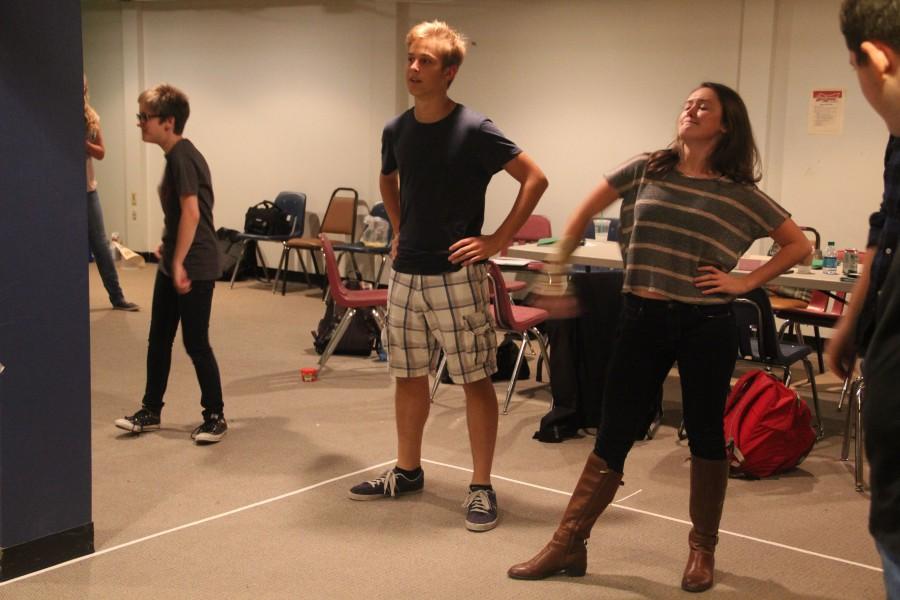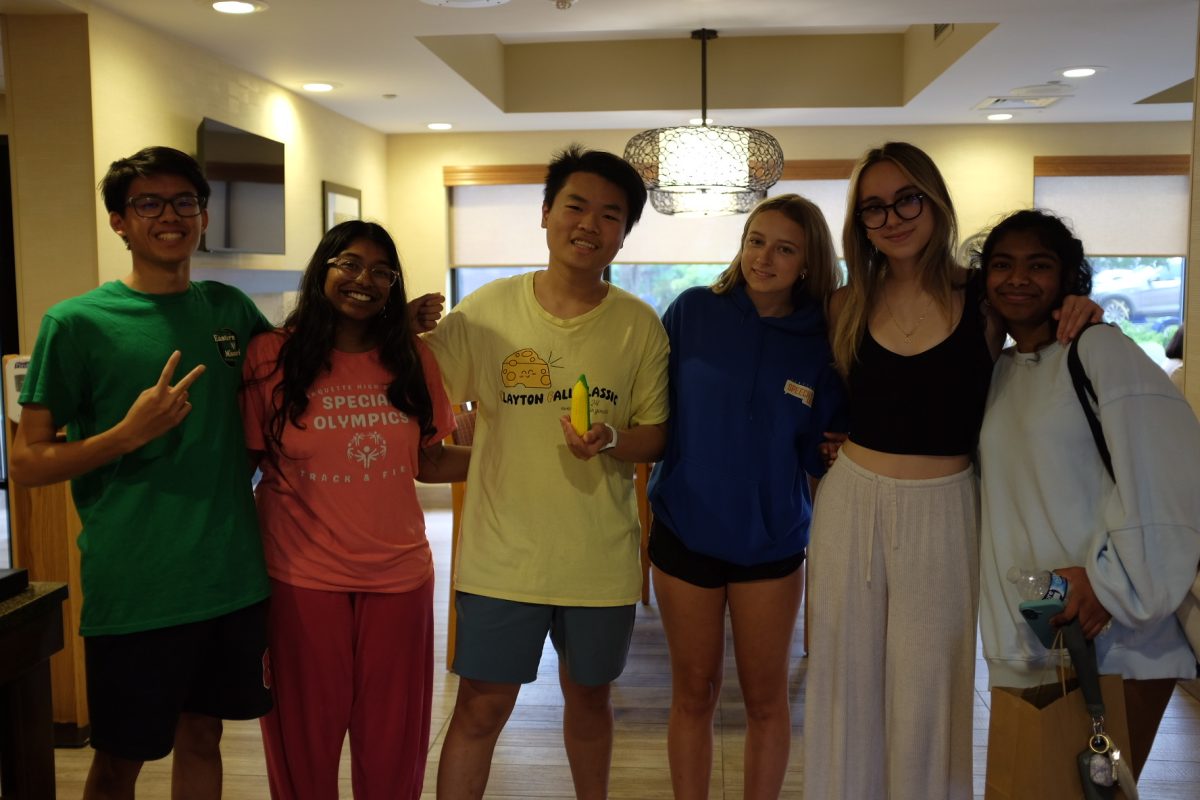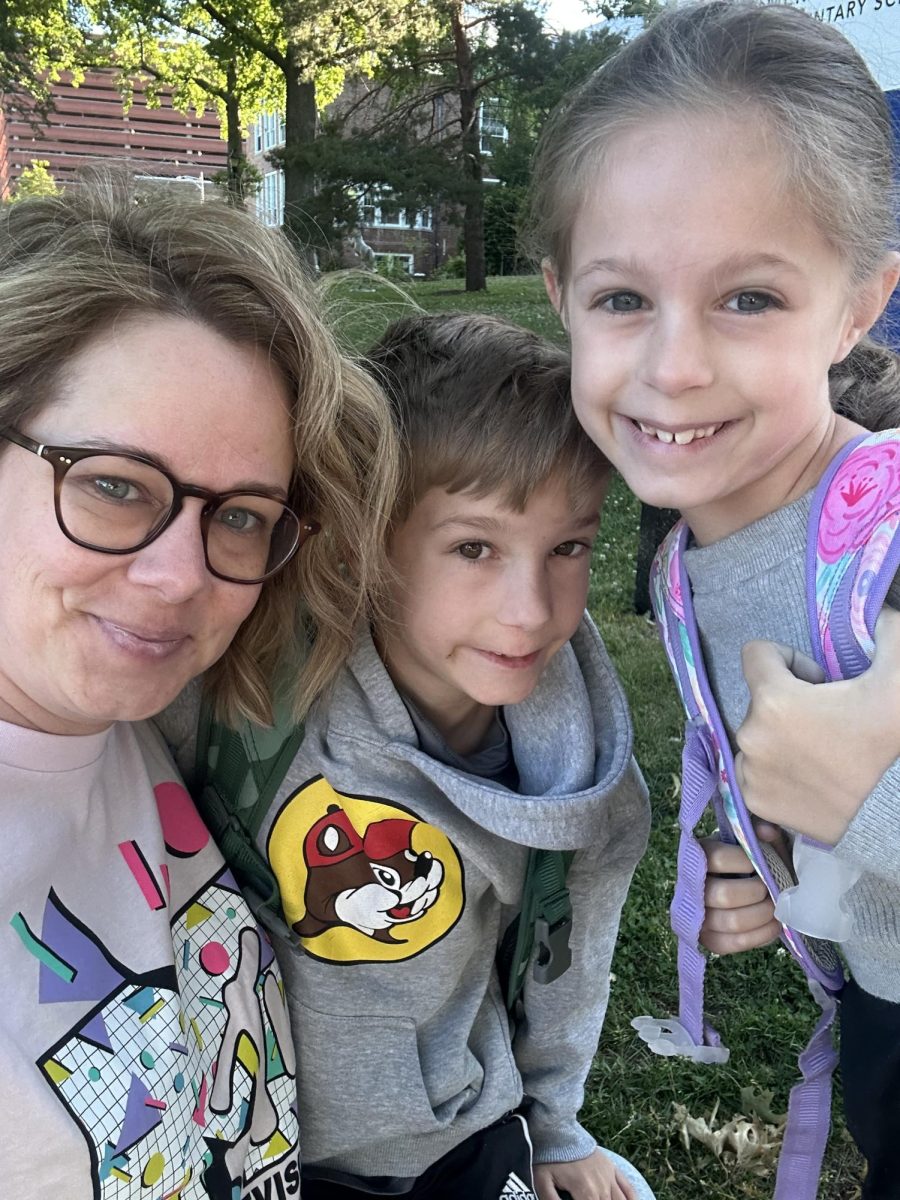Good in Everything
September 25, 2014
“It’s a great celebration of our community,” Clayton High School Drama teacher Kelley Weber said regarding “Good in Everything,” a show recently written revolving around the lives of Clayton residents.
The show is modeled after William Shakespeare’s “As You Like It,” written in the 17th century. The play contains contemporary English interspersed with Shakespearean language, used to express heightened emotion in the show.
“Good in Everything” is the third production of Shakespeare in the Streets, a sect of the St. Louis Shakespeare Festival. Each fall, a different community is represented by a play written to fit the structure of a play by Shakespeare. The first production, in 2012, was set on Cherokee Street, and last year’s show featured The Grove. The plays are performed right on the streets of St. Louis; however, the sets are packed up during the day to allow for traffic flow.
The idea for Shakespeare in the Streets (SITS) was formed by the original executive director of the program, Rick Dildine. Dildine noticed several streets in St. Louis were blocked off, and was told the cause of these closings was the crime in the neighborhood. “He started to think, ‘what if we made a statement and, instead of blocking streets off for crime, we blocked them off for art?’” said ‘Good in Everything’ director Alec Wild. “His idea was to shut down streets in the name of art and create togetherness.”
“Good in Everything,” which opened Sep. 17, 2014, was written by playwright Nancy Bell. Bell and Wild worked for months on the content of the show before beginning the acting aspect of the production. A few short months after the end of ‘Old Hearts Fresh,’ a play about the Grove which was based off of Shakespeare’s “The Winter’s Tale,” Bell and Wild began to study the Clayton community.
“We go into the neighborhood for six or seven months. We meet as many people as we can. We talk to them, we record them, we ask them questions,” Wild said. “We try and embed ourselves in the community as much as possible.”
For Wild, community is the most important part of the SITS project. Without the support SITS has received from St. Louis, the show would neither be attended nor funded. The fact that the shows are free is a large motivational factor to draw a crowd to the shows. “Theatre, in this day and age, is really for rich people, really for white people, really for people who can afford it,” Wild said. “So, I think it’s important that we bring, first of all, theatre to people, and second of all, that we tell those people’s stories. It’s not a matter of, we’re going to take Shakespeare’s 400 year old play to Clayton, and ask people to listen to it. We’re actually taking their story and making their stories into a play.”
Because the stories of the St. Louis community is not always picture-perfect, those issues are deliberately addressed in the Shakespeare in the Streets productions. Bell does not shy away from difficult subject matter; in fact, she bases the plotline on those controversies. “[Bell’s] a great tackler of big issues, about race or sexuality while at the same time remaining deeply funny and true,” Wild said.
Junior Adam Treutelaar, who appeared as Charles, a gay jock “archetype,” as Treutelaar calls the role, agreed. “It’ll be good to have those types of things in a setting that’s more laid back,” Treutelaar said. “You don’t feel like you’re being preached to.”
Treutelaar initially heard about the project in the spring of 2014, when Bell and Wild came to Clayton High School looking for inspiration. “The people from the Shakespeare festival came and talked to us,” Treutelaar said. “They decided that the high school was one of the most diverse communities we have here in Clayton, so they talked to us about the high school and the way that life works here.”
Bell and Wild also sat in on CHS theatre classes, which led to the modification of the character Kelly Dukes, who was shaped by teacher Kelley Weber. “I’m actually playing a role that was written for me. I’m sort of playing myself,” Weber said. “The kids here at school call me KDubs, and in the play they call me KDukes. So, it’s not the biggest acting challenge I’ve ever had, but there is something challenging about playing someone so close to you. It’s fun.”
Treutelaar did not hear about the show again until he was approached by Weber. He was initially hesitant to make the show work with his already busy schedule, but “a little bit of pressure from Ms. Weber helped me realize that it’s doable, it’s just hard,” Treutelaar said.
Treutelaar, who attends his zero-hour, Show Choir, four mornings a week and has either soccer practice or a game every day after school, did not struggle fitting the show into his schedule. The challenge was finding time to do homework. “[Rehearsal is] probably every other night,” Treutelaar said, “And we also have to do homework at some point,” like at 5:30 in the morning, the time that Treutelaar has become accustomed to using to complete his school work.
“Good in Everything” is the first professional production that Treutelaar has been involved in; although, he has been active in theatre productions at both Wydown Middle School and CHS. Treutelaar represents a portion of the cast that comes from the Clayton community, an element that is vital to the creation of SITS.
Wild, when casting, a task that he considers “90 percent of [his] job,” holds two audition sessions: one for professional actors, and one for community members interested in theatre. Wild’s goal is to create a cast of half professionals and half members of the highlighted neighborhood, a mission that was successful in the casting of “Good in Everything.”
“A lot of rehearsal is about the professionals tutoring the non-professionals about how to act, what rehearsal behavior is like and how to do things on stage,” Wild said. “On the other hand, you also have the people from Clayton who are sort of tutoring all of us about what Clayton’s really like.”
Because there are always citizens of Clayton at the rehearsal, Bell has continuous feedback on the authenticity of her script. Although much of the script came from direct recordings of people from Clayton, “the actors will have things to say about it,” Wild said. “‘Well, I don’t know that I’d do that,’ the people from Clayton might say. With their input, the play actually changes.”
For Wild, the greatest part of directing the show is seeing the two very different groups interact. “That mix of energy is the greatest thing about the project,” Wild said. “That’s the real reason for me to be there. That process of two groups teaching each other is very exciting and fruitful.”
Wild and Bell are already looking ahead to their 2015 project, which will be set in North City.
“Rick [Dildine], the executive director, [has a] mission is to go into every single neighborhood in St. Louis,” Wild said. “The point is to get to everything, so I guess that Clayton was third on the list.”







